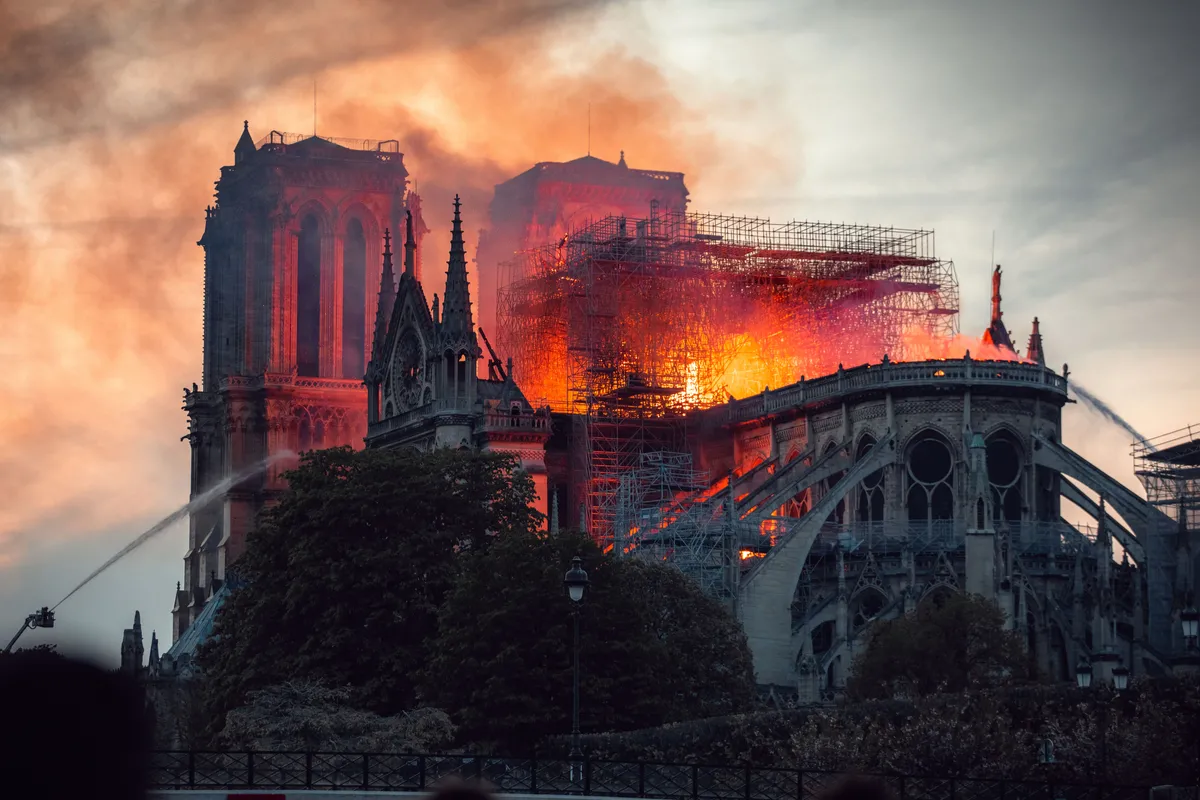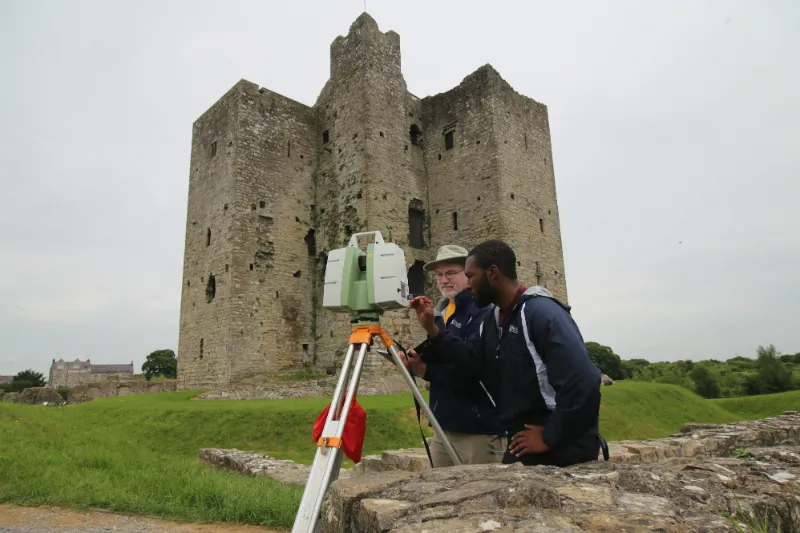After an accidental fire caused heavy damage to Paris’ Notre Dame Cathedral on April 15, 2019, experts say intricate 3D laser scans of the building could prove instrumental to its restoration. Ithaca College physics professor Michael “Bodhi” Rogers has been using 3D laser scanners to create digital models of historic structures for years, including Abraham Lincoln’s summer cottage in Washington, D.C., and Ireland’s Trim Castle. IC News spoke with Rogers about using 3D scanning technology to help repair damage to historic buildings.
IC NEWS: How can 3D scanning technology be used in the repair and rebuilding of damaged buildings like Notre Dame?
ROGERS: When my team and I conduct a scan of an historic structure, we take positional readings every 5 millimeters inside and out of the building. The resulting data is referred to as a point cloud. The point cloud can be used to make detailed measurements of the damaged portions of the structure from all sides. When the damage is minor, such as to the detailed molding around a door, the data can be sent to a computer-controlled milling machine to reproduce the damaged piece of molding.
The level of detail from a high-quality laser scan surpasses traditional architectural and historic preservation drawings due to the three-dimensionality of the data. When an architect or preservation specialist creates an architectural rendering, they make a choice as to what measurements to record. For example, the size of a window is typically recorded as two measurements: height and width. Yet that window might not be square or the same size on the top as the bottom. If that window was destroyed, these fine details would be lost. Because our laser scans preserve every detail to within 5 millimeters, we can go back and take as many new measurements, from any angle or perspective, in the unfortunate case of massive damage like that Notre Dame sustained.


